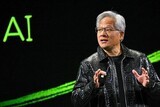Michael Burry—the investor who foresaw the 2008 mortgage crisis and inspired The Big Short—is once again raising alarms. This time, his attention is fixed not on subprime loans but on the economics behind the global AI buildout. His warning is straightforward: the numbers powering Big Tech’s AI ambitions don’t add up.

Burry’s New Short: Questioning the Math Behind AI Profits
Burry argues that several major technology companies, including Meta Platforms, Oracle, Microsoft, Amazon and Google, are overstating profits by stretching the depreciation schedules of GPUs and data-center servers.
Nvidia’s accelerators, which typically have a real-world life cycle of 2 to 3 years, are being treated as 5- to 6-year assets, he says. The accounting choice matters. Burry estimates that from 2026 to 2028, depreciation could be understated by as much as $176 billion, inflating earnings across the sector.
His analysis suggests:
Oracle’s 2028 earnings could be overstated by 26%, Meta’s by as much as 20%.
To Burry, the pattern is familiar: financial statements that look healthy on the surface but conceal structural weaknesses underneath.

A $5 Trillion AI Infrastructure Cycle—And a Financing Gap
A separate concern is the unprecedented capital required to sustain the AI boom. JPMorgan estimates that hyperscalers will need $5.3 trillion over the next five years to build out AI data centers—an investment cycle with few historical parallels.
The challenge is financing. JPMorgan calculates:
Internal cash and equity issuance may cover ~$2 trillion.
Even with investment-grade debt, high-yield bonds, securitization, and private credit, a funding gap of $1.4 trillion could remain.
The shortfall, JPMorgan warns, may be filled by shadow-banking channels, including private credit funds and alternative lenders. That shift raises the risk of leverage accumulating outside the regulatory perimeter.
The bank also notes that achieving a modest 10% return on this infrastructure would require $650 billion in annual AI-related revenue—equivalent to:
roughly $35 per year from every global iPhone user, or $180 per year from every Netflix subscriber.
Whether AI can generate that kind of recurring income is far from clear.
Meta’s SPV Structure Revives Old Questions About Off–Balance Sheet Debt
Some of the most complex financing is already visible. Meta’s Hyperion data-center development in Louisiana—a project estimated at nearly $30 billion—is being carried out through a special-purpose vehicle. Blue Owl Capital holds 80% of the equity, while Meta holds 20%, but Meta retains operational control.
More than 91% of the financing is debt, and most of it sits outside Meta’s consolidated balance sheet.
On paper, Meta’s leverage appears manageable. In practice, the company is operating a highly capital-intensive facility backed by large liabilities that investors don’t fully see. Pension funds, insurers and private-equity firms are becoming key financiers, echoing structures seen in the run-up to past corporate failures.
This is precisely the kind of financial opacity that Burry says investors should watch.
A Different Reading: Goldman Sachs Says the Cycle Is Early, Not Excessive
Not everyone agrees with Burry’s assessment. Goldman Sachs argues that today’s AI investment cycle, while large, is still in its early phase.
Goldman estimates:
U.S. AI hardware spending currently totals ~$250 billion annually.
That represents 9% of corporate investment and 1% of GDP.
During the peaks of the dot-com boom, the railroad expansion, and the electrification era, investment reached 2% to 5% of GDP—far above current levels.
Goldman also highlights productivity potential. If AI adoption accelerates, the bank estimates U.S. labor-productivity growth could rise by 1.5 percentage points annually. Meanwhile, current GDP statistics may understate AI activity by roughly $115 billion, because AI infrastructure is often classified as intermediate input rather than final output.
From this perspective, the AI cycle may be closer to the beginning than the end.
The Dot-Com Parallel: From ‘Dark Fiber’ to Possibly Idle Data Centers
History offers reasons for vigilance. In the late 1990s, U.S. telecom operators laid vast networks of fiber-optic cable. After the dot-com crash, 85% to 95% of that capacity went unused—so-called “dark fiber.”
Today, the equivalent risk lies in GPU clusters and hyperscale data centers. If AI monetization grows more slowly than anticipated, large portions of today’s capacity could become underutilized fixed assets.
JPMorgan warns that up to $20 trillion in global market capitalization could be exposed if AI infrastructure spending fails to yield sufficient returns.
For Burry, this is the real potential fault line—not GPU depreciation per se, but whether the industry’s physical buildout can be justified through sustainable revenue.
Is This a Bubble? The Evidence Remains Mixed
A sober review of the data shows an ambiguous picture:
▲Investment vs. GDP
AI investment equals ~1% of GDP, well below historical bubble peaks.
▲Valuation
Nvidia and other AI leaders trade at 50–60x forward earnings—pricey by conventional standards, but supported by exceptional growth.
▲Productivity
Early gains are visible at the firm level, but macroeconomic data remains inconclusive.
▲Leverage
SPVs, private-credit financing and off-balance sheet structures are increasing, but have not yet reached systemic levels.
Taken together, the indicators point to a market not fully in bubble territory, but one in which the foundations carry significant early-stage risk.
The Real Question: Not Whether There Is a Bubble, But Where It Would Burst
For investors, the more practical question is identifying the likely epicenter of any future correction.
Three areas merit close monitoring:
1. AI Sectors with Durable Economics
Agentic AI, robotics, autonomous systems and industrial automation may produce cash flows capable of supporting long-term infrastructure costs.
2. Corporate Accounting and Leverage
Companies extending GPU depreciation schedules or relying heavily on SPVs and private credit are most vulnerable to demand fluctuations.
3. Productivity vs. Investment
A widening gap between rising investment and stagnant productivity would be a classic indicator of speculative excess.
Beyond the Bubble Narrative
Burry frequently posts on X:
“I was right before. I will be right again.”
Whether that proves true remains to be seen. But one point is already clear: the outcome of the AI era will depend less on headline-grabbing demonstrations of model intelligence and more on the financial viability of the infrastructure required to support them.
For believers in AI, the task is not avoiding the word “bubble,” but understanding the underlying structures—depreciation policies, financing vehicles and real-world business models.
Bubbles do come.
The critical decision is not when, but where you’ll be positioned when they do.
By Tech Punguna, Columnistㅣscienceazac@naver.com
- Tesla Isn’t Just Building Cars...It’s Engineering an AI Empire Aimed at Earth and Beyond
- Masayoshi Son’s AI Gamble: Selling Nvidia, Going All-In on OpenAI
- NVIDIA Secures HBM4 Samples from Samsung and SK hynix
- [Tech Column] In the Post-Nuclear Era, Korea’s AI Survival Strategy Hinges on Power Supply
- Google Unveils New AI Chip “Ironwood,” Challenging NVIDIA’s Dominance
- [테크 칼럼] ‘몸으로 배우는 AI’가 만든 세 갈래 전쟁...Genie3, Cosmos, GR00T의 진짜 차이
- Why Kakao Has Become Korea’s “Ugly Duckling”
- Transparent iPhone Rumors Surge Again as Apple’s “All-Glass” Patent Raises Bezel-Free iPhone Expectations
- NVIDIA’s Jensen Huang Rejects AI Bubble Concerns as a 500 Billion Dollar Order Book Shows the Company’s Lead is Real
- Nvidia Declares the Dawn of an “AI Virtuous Cycle” as It Delivers Record-Shattering Q3 Earnings

![[동학] 카카오톡 친구탭, 결국 12월 롤백… “격자형 피드는 선택 옵션으로”](https://cdn.kmjournal.net/news/thumbnail/custom/20251126/5517_10550_1119_1763853080_120.jpg)


![[테크 칼럼] 제미나이3, GPT-5.1을 넘다…AI는 이제 ‘일을 대신하는 시대’로 간다](https://cdn.kmjournal.net/news/thumbnail/custom/20251126/5457_10454_4847_1763621329_120.jpg)



![[낭만 테크 시대] AI 대항해 시대](https://cdn.kmjournal.net/news/thumbnail/custom/20251126/5603_10714_4334_1764121414_160.jpg)

